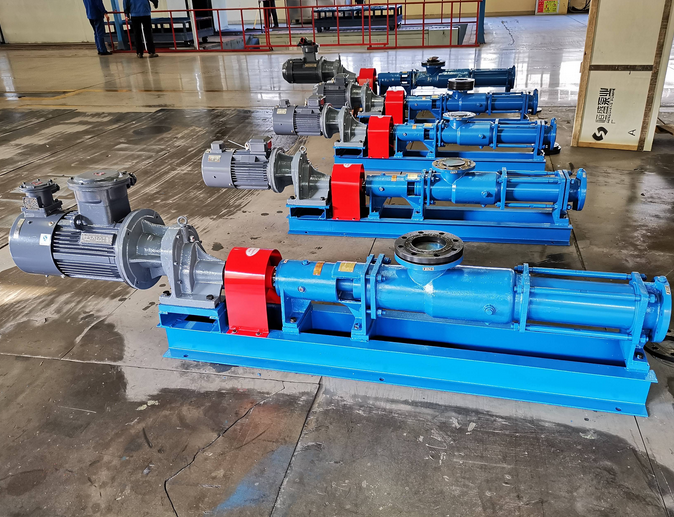Application of Screw Pumps in Wastewater Treatment
Screw pumps are widely used in wastewater treatment, mainly due to their unique performance characteristics, such as variable delivery, strong self-priming ability, reversibility, and the ability to deliver liquids containing solid particles. The following are the specific applications of screw pumps in wastewater treatment and related precautions:
1. Application
Wastewater delivery:
Screw pumps can effectively deliver various wastewaters, including domestic wastewater, industrial wastewater, etc., to ensure the smooth progress of the wastewater treatment process.
Wet sludge treatment:
During the wastewater treatment process, screw pumps are often used to deliver wet sludge. Its strong delivery capacity and self-priming ability make sludge treatment more efficient.
Dosing:
In wastewater treatment, screw pumps can also be used to dosing chemicals, such as flocculants, to help improve water quality and improve the efficiency and quality of wastewater treatment.
Other applications:
Screw pumps can also be used to deliver media such as return sludge and mixed liquid in biological reactors in wastewater treatment plants to meet the different needs of wastewater treatment processes.
2. Selection and Configuration
Economic, reasonable and reliable:
The selection of screw pumps should follow the principles of economy, rationality and reliability, and should be reasonably selected according to the actual situation and process requirements of the wastewater treatment plant.
Speed control:
The flow rate of the screw pump is linearly related to the speed. Although high speed can increase the flow rate and head, it will accelerate the wear between the rotor and the stator and shorten the service life. Therefore, it is recommended to reduce the speed through a reduction mechanism or a stepless speed regulation mechanism to keep it within a reasonable range of less than 300 revolutions per minute.
Material and accessories:
Considering the corrosive media and solid particles that may be encountered in wastewater treatment, the materials and accessories of the screw pump should have good corrosion resistance and wear resistance.
3. Maintenance and care
Prevent debris from entering:
Solid debris mixed in wet sludge will damage the rubber stator of the screw pump. Therefore, it is necessary to ensure that debris does not enter the pump cavity. A crusher or a grille device can be installed in front of the pump to block the debris.
Feed cut protection:
The screw pump is never allowed to operate in the case of feed cut, otherwise the rubber stator will instantly burn out due to high temperature due to dry friction. For this reason, a feed cut shutdown device can be installed on the pump body to prevent such a situation from happening.
Pressure control:
When the outlet end of the screw pump is blocked, the pressure will gradually increase. In order to avoid damage to the pump, a bypass overflow valve is generally installed at the outlet to stabilize the outlet pressure.
Regular inspection and maintenance:
Regular inspection and maintenance of the screw pump is the key to ensure its normal operation and extend its service life. The inspection content includes bearing temperature, shaft seal leakage, pump noise and vibration, etc.
4. Advantages Summary
Strong adaptability: The screw pump can transport media such as wastewater and sludge containing solid particles.
Strong self-priming ability: Self-priming function can be achieved without additional water diversion device.
Reversible: Reversal operation can be achieved when necessary to cope with different working conditions.
Smooth operation: Due to the structural characteristics of the screw pump, it runs smoothly and has low noise.





